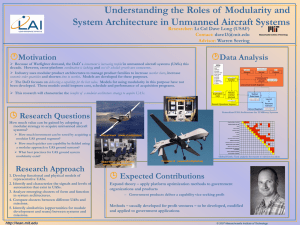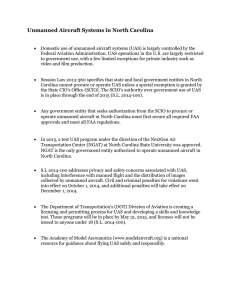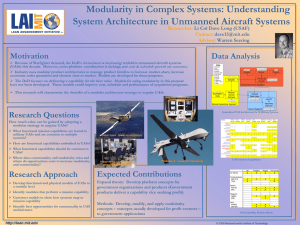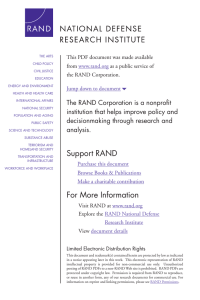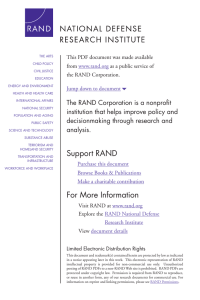Unmanned Aircraft Aerosol Sampling: Improvements in Capabilities and Sample...
advertisement
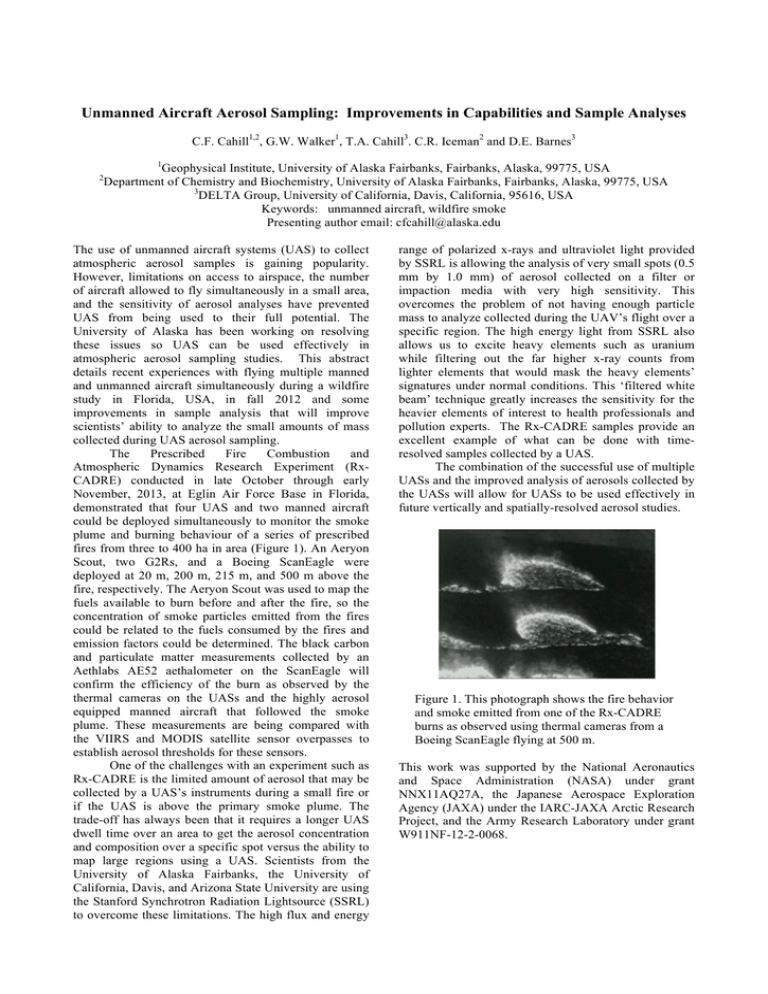
Unmanned Aircraft Aerosol Sampling: Improvements in Capabilities and Sample Analyses C.F. Cahill1,2, G.W. Walker1, T.A. Cahill3. C.R. Iceman2 and D.E. Barnes3 1 2 Geophysical Institute, University of Alaska Fairbanks, Fairbanks, Alaska, 99775, USA Department of Chemistry and Biochemistry, University of Alaska Fairbanks, Fairbanks, Alaska, 99775, USA 3 DELTA Group, University of California, Davis, California, 95616, USA Keywords: unmanned aircraft, wildfire smoke Presenting author email: cfcahill@alaska.edu The use of unmanned aircraft systems (UAS) to collect atmospheric aerosol samples is gaining popularity. However, limitations on access to airspace, the number of aircraft allowed to fly simultaneously in a small area, and the sensitivity of aerosol analyses have prevented UAS from being used to their full potential. The University of Alaska has been working on resolving these issues so UAS can be used effectively in atmospheric aerosol sampling studies. This abstract details recent experiences with flying multiple manned and unmanned aircraft simultaneously during a wildfire study in Florida, USA, in fall 2012 and some improvements in sample analysis that will improve scientists’ ability to analyze the small amounts of mass collected during UAS aerosol sampling. The Prescribed Fire Combustion and Atmospheric Dynamics Research Experiment (RxCADRE) conducted in late October through early November, 2013, at Eglin Air Force Base in Florida, demonstrated that four UAS and two manned aircraft could be deployed simultaneously to monitor the smoke plume and burning behaviour of a series of prescribed fires from three to 400 ha in area (Figure 1). An Aeryon Scout, two G2Rs, and a Boeing ScanEagle were deployed at 20 m, 200 m, 215 m, and 500 m above the fire, respectively. The Aeryon Scout was used to map the fuels available to burn before and after the fire, so the concentration of smoke particles emitted from the fires could be related to the fuels consumed by the fires and emission factors could be determined. The black carbon and particulate matter measurements collected by an Aethlabs AE52 aethalometer on the ScanEagle will confirm the efficiency of the burn as observed by the thermal cameras on the UASs and the highly aerosol equipped manned aircraft that followed the smoke plume. These measurements are being compared with the VIIRS and MODIS satellite sensor overpasses to establish aerosol thresholds for these sensors. One of the challenges with an experiment such as Rx-CADRE is the limited amount of aerosol that may be collected by a UAS’s instruments during a small fire or if the UAS is above the primary smoke plume. The trade-off has always been that it requires a longer UAS dwell time over an area to get the aerosol concentration and composition over a specific spot versus the ability to map large regions using a UAS. Scientists from the University of Alaska Fairbanks, the University of California, Davis, and Arizona State University are using the Stanford Synchrotron Radiation Lightsource (SSRL) to overcome these limitations. The high flux and energy range of polarized x-rays and ultraviolet light provided by SSRL is allowing the analysis of very small spots (0.5 mm by 1.0 mm) of aerosol collected on a filter or impaction media with very high sensitivity. This overcomes the problem of not having enough particle mass to analyze collected during the UAV’s flight over a specific region. The high energy light from SSRL also allows us to excite heavy elements such as uranium while filtering out the far higher x-ray counts from lighter elements that would mask the heavy elements’ signatures under normal conditions. This ‘filtered white beam’ technique greatly increases the sensitivity for the heavier elements of interest to health professionals and pollution experts. The Rx-CADRE samples provide an excellent example of what can be done with timeresolved samples collected by a UAS. The combination of the successful use of multiple UASs and the improved analysis of aerosols collected by the UASs will allow for UASs to be used effectively in future vertically and spatially-resolved aerosol studies. Figure 1. This photograph shows the fire behavior and smoke emitted from one of the Rx-CADRE burns as observed using thermal cameras from a Boeing ScanEagle flying at 500 m. This work was supported by the National Aeronautics and Space Administration (NASA) under grant NNX11AQ27A, the Japanese Aerospace Exploration Agency (JAXA) under the IARC-JAXA Arctic Research Project, and the Army Research Laboratory under grant W911NF-12-2-0068.
